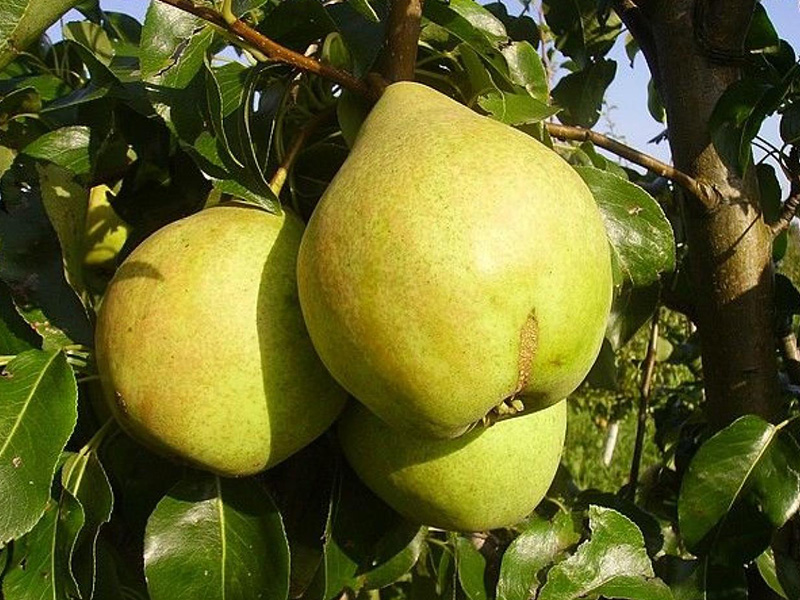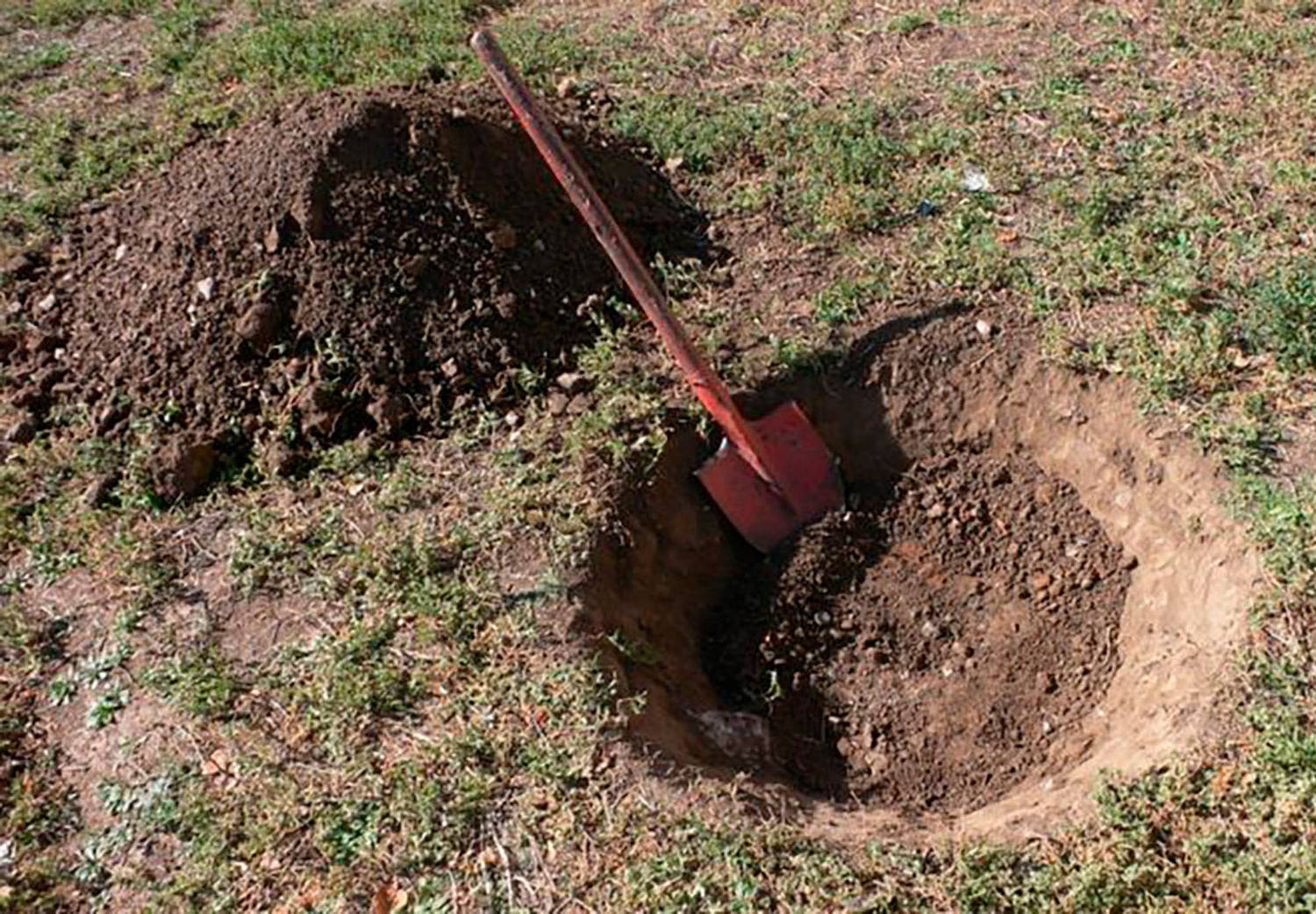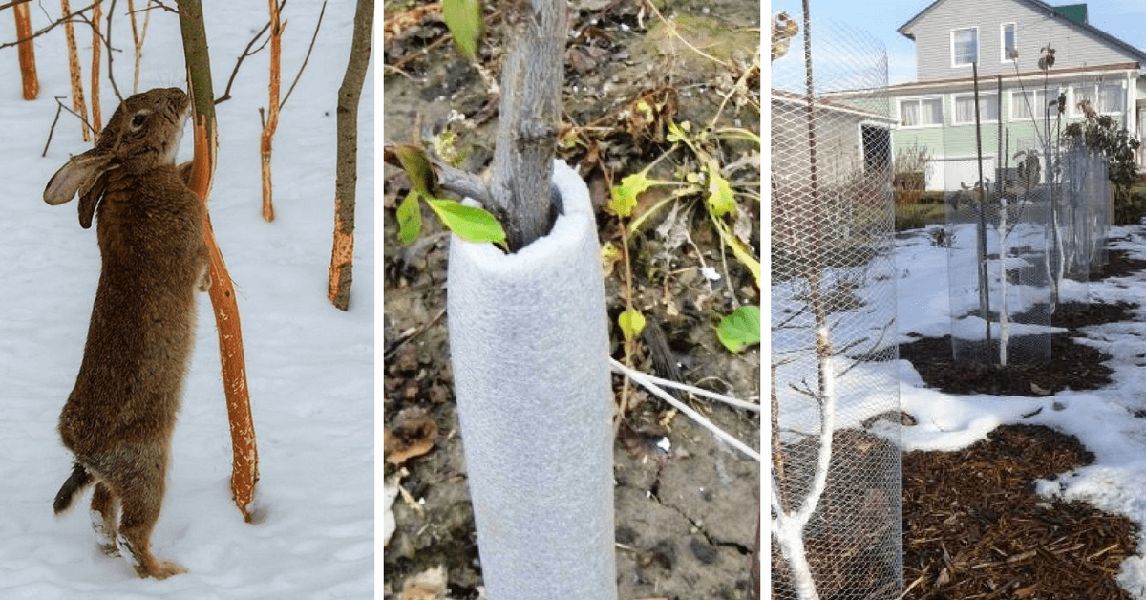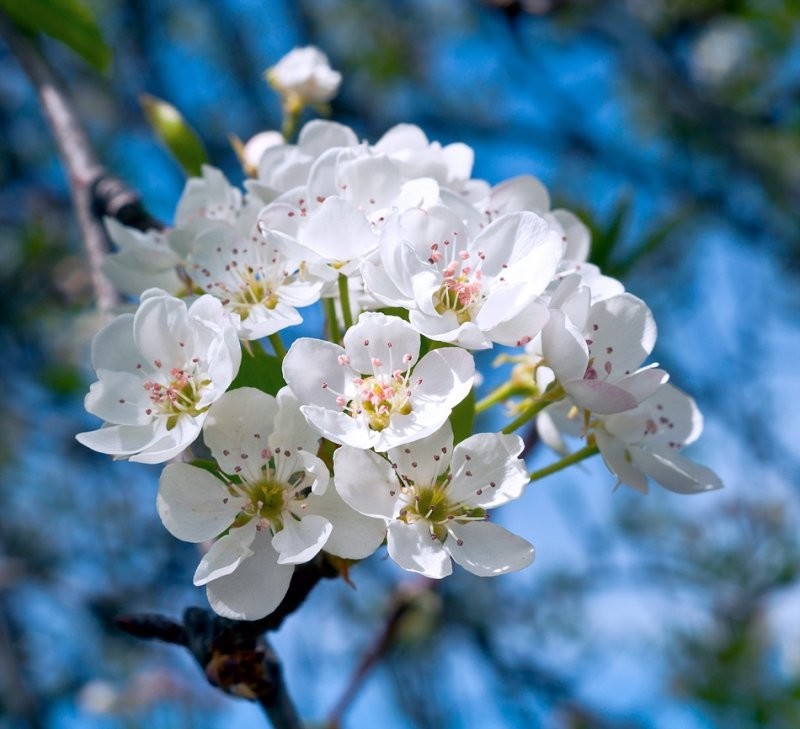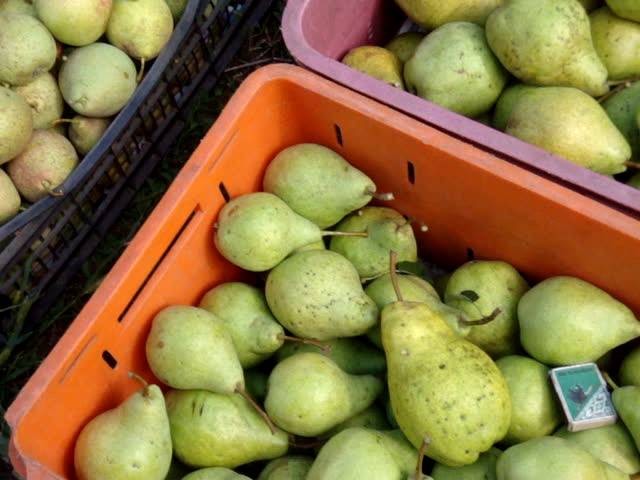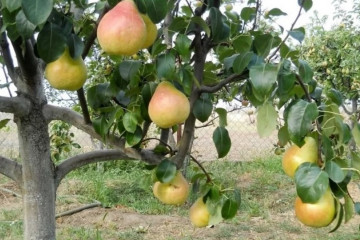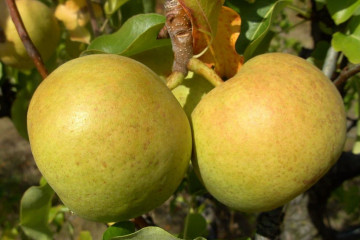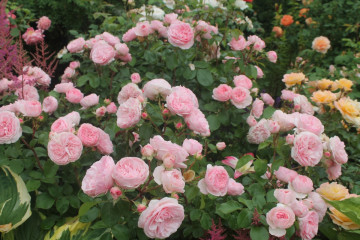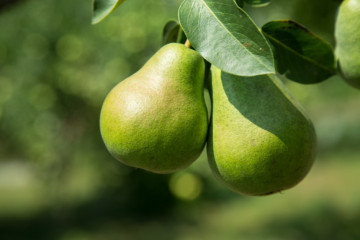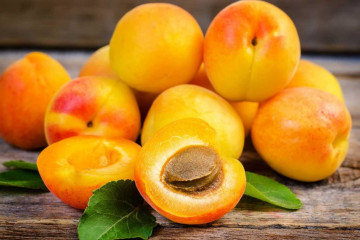Pear Just Maria: description of the variety, pollinators for her
Content:
- The main characteristics of the variety
- Advantages and disadvantages of the variety
- Landing dates
- Preparation of seedlings and planting pit
- Planting seedlings and caring for them
- Watering
- Mulching and caring for the trunk circle
- Pruning and shaping the crown
- Pollination varieties
- Preparing for winter
- Harvesting and storage
- Diseases and pests: control and prevention
Almost all gardeners like the Prosto Maria pear because of its beautiful and tasty fruits, good yield. The name of the variety reminds many of the famous Brazilian television series, but in fact, the pear is named so in honor of the breeder from Belarus Maria Myalik. The progenitor of Just Mary is the Butter Pear, which passed on all its virtues to the “descendant”. The selection of the variety took over 35 years.
The main characteristics of the variety
Pear Maria belongs to the late-ripening varieties. In central Russia and the Moscow region, it begins to bear fruit in mid-autumn. This variety is frost-resistant - a tree can withstand temperatures of about -35 degrees without consequences for health or fruiting, quickly recovering after thawing.
Crown width
By the age of 10, a pear tree grows to an average height (about 3 m) and has a wide pyramidal crown with a diameter of about 2-2.5 meters. The branches of medium density begin to grow perpendicular to the trunk, gradually lifting the ends up.
Harvested in autumn. It's just that Maria is a transport-resistant variety. It is better to eat pears after they have “settled down” a little.
Description of fruits
The mass of ripe fruits reaches 180-200 gr. The pulp of the pear is tender and juicy, light yellow in color. The taste is sweet with a slight sourness (sugar content is about 8%). The smell is not strong. The smooth skin is covered with small dots. If pears are ripened in the open sun, then the skin may take on a "tanned" shade.
Advantages and disadvantages of the variety
Pear Just Maria has many advantages:
- very sweet taste and beautiful shape of the fruit;
- resistance to diseases such as bacterial cancer, scab, septoria and viral infections;
- rapid development and onset of fruiting;
- consistently high productivity even in adverse weather conditions;
- good preservation of fruits during transportation;
- ease of reproduction;
- frost resistance;
- Regular and abundant harvest: about 40 kg of fruit can be harvested from one medium-sized tree.
Prosto Maria has only one drawback - picky about the surrounding conditions: a tree growing on poor or waterlogged soil, under the influence of strong winds or in low light, will develop slowly and bear fruit poorly.
Landing dates
To prevent young trees from freezing, they should be planted at least 2 months before the first frost. In warm regions of our country, it is best to plant in autumn, at the beginning of October. In areas with early and cold winters, it is preferable to plant Just Maria in the spring, after the establishment of stable warm weather.
Preparation of seedlings and planting pit
It is best to plant trees in neutral or slightly acidic soil. A pit for autumn planting is prepared in spring: it is dug to a depth of about 70 cm and sequentially filled with:
- 5-10 cm of drainage;
- 20 cm - a layer of a mixture of turf, sand, peat, humus and biostimulant.
Before planting, seedlings should be immersed in water for several hours, to which a root growth stimulant, for example, "Heteroauxin", "Kornevin" or "Epin", should be added.
Planting seedlings and caring for them
Pear trees are planted according to the following plan:
- A sufficient amount of soil is extracted from the planting pit so that the roots of the seedling fit into the cavity.
- A small hill should be poured in the center, at a distance of 10-15 cm from it, drive in a wooden peg about 1 m high from the surface of the earth.
- Spread out the roots of the seedling.
- Lower the young tree into the planting hole.
- Fill up the hole so that the root collar of the seedling remains at a height of 3-5 cm above ground level.
- tamp the topsoil.
- Using an elastic band, carefully tie the tree to the peg, making sure that the trunk is not pinched.
- Make a near-trunk circle using a roller made of earth along the diameter of the hole.
- Water the seedling abundantly.
- Mulch the soil. As mulch, you can use coniferous needles, rotted sawdust or freshly cut grass.
- Cut the tree to a height of 70-80 cm and shorten its branches by about a third (if any).
Caring for seedlings will not cause difficulties even for novice gardeners. Plants should be watered on time and correctly (for the first 2 years they do not need fertilizers), as well as periodically loosen the root circle to provide the roots with oxygen.
Watering
A young seedling should be watered daily, pouring 10 liters of water under it. An adult plant is saturated with moisture according to the following scheme:
- Immediately after the snow melts.
- Before the spring loosening of the soil.
- When young leaves are just beginning to appear.
- Before flowering.
- In warm and humid summer, it is necessary to water the tree once a month, if a drought occurs, then the soil should be moistened more often.
- The last watering of the year is carried out in the second half of September. It is necessary to saturate the fruit with juices and keep them from drying out.
Mulching and caring for the trunk circle
You can mulch Just Maria with straw, compost or freshly cut grass. To give the trunk circle an attractive appearance, it is recommended to use chopped bark or wood chips as mulch.
Pruning and shaping the crown
Basic principles of correct crown formation:
- the top of the tree should be pruned every year to the level of the upper branches;
- branches growing inward are cut out;
- in the spring, before the juices begin to move, molding pruning is carried out;
- in the fall (after the leaves have fallen off and the tree has fallen asleep), all broken and diseased branches are removed.
Pollination varieties
This variety of fruit trees is partly self-fertile, that is, approximately 20% of flowers are fertilized with their own pollen.In order for the pear to bear fruit well, it should be planted next to other pollinators, the flowering times of which are the same. Best suited for this purpose are varieties such as Duchess and Memory of Yakovlev.
How to propagate a pear
It's just that Maria, like most other pear varieties, multiplies easily. This can be done in three ways: by grafting, grafting on another tree, or by layering.
Preparing for winter
Although the tree can withstand severe frosts, when grown in the Urals, it must be covered for the winter. This is done like this:
- The trunk circle is cleared of grass, sticks and other debris.
- Mulch is poured so that at the edges of the circle its thickness reaches 10 cm, and to the trunk - up to 25-30 cm. You can also use humus.
- The trunk and lower part of the main branches must be whitewashed to protect them from hares.
- Wrap the bottom of the trunk with a covering material that allows air to pass through.
- In winter, snow should be laid around the trunk, renewing the snowdrift as it subsides and breaking down the ice crust on top of it.
Harvesting and storage
Fruit should be picked unripe, yellow-green in color and left to ripen for 1.5-2 months in a cool room. Fully ripe pears turn golden yellow, very soft and tender. The fruits are transported in an "immature" stage to preserve them during transportation.
Diseases and pests: control and prevention
Although Just Maria is distinguished by strong immunity, during outbreaks of diseases, it is necessary to carefully monitor the condition of the trees in order to have time to take action in time. If the leaves begin to dry and curl on the pear, as well as flowers and ovaries fall off, then the tree was attacked by the leafworm aphid, together with ordinary ants. You can fight pests both with the help of ready-made preparations and folk remedies (for example, garlic tincture or a solution of laundry soap).
If there is a gardener who has not yet tried the Just Maria pear, then the description of this wonderful variety and its taste characteristics will certainly push him to plant such a tree on his site.
